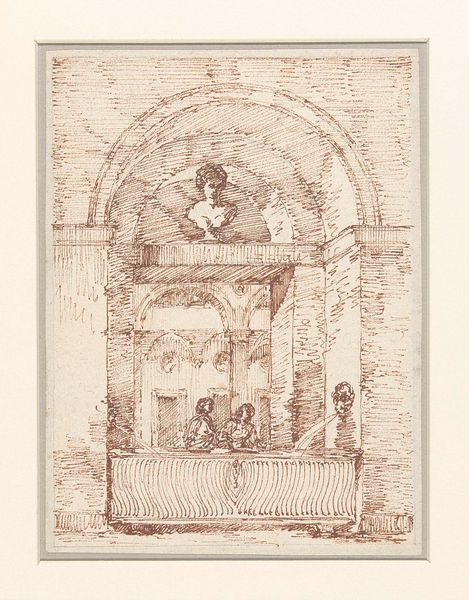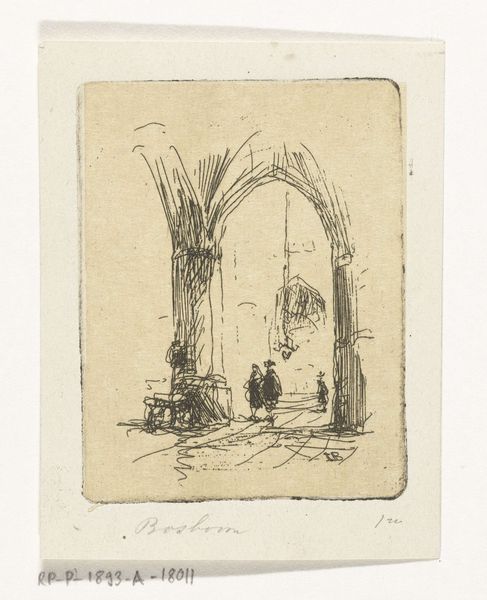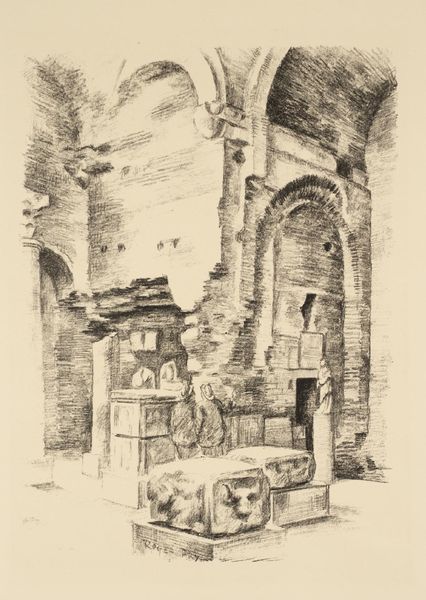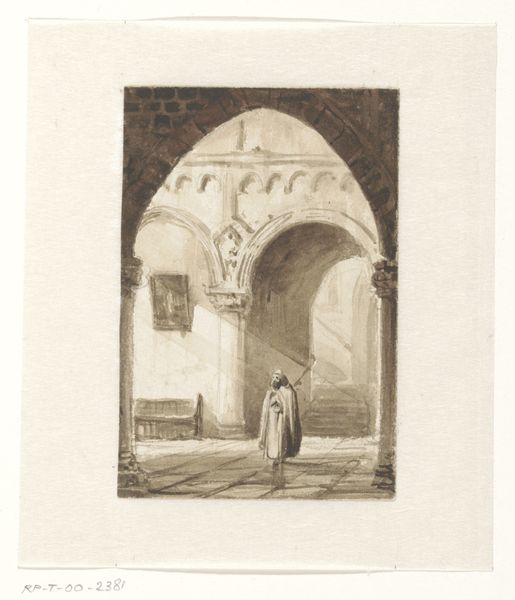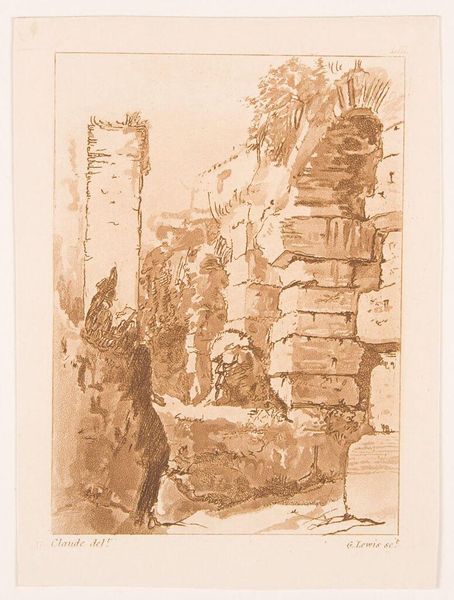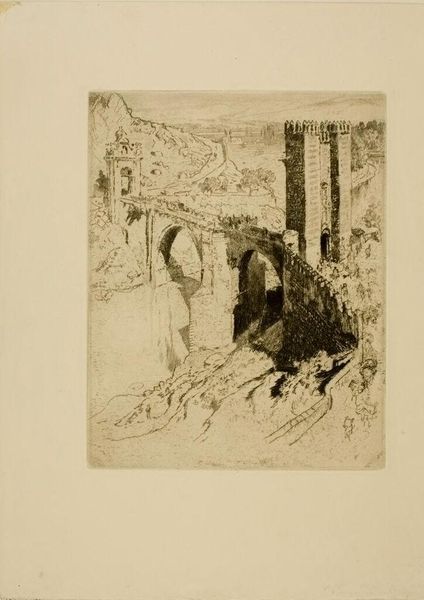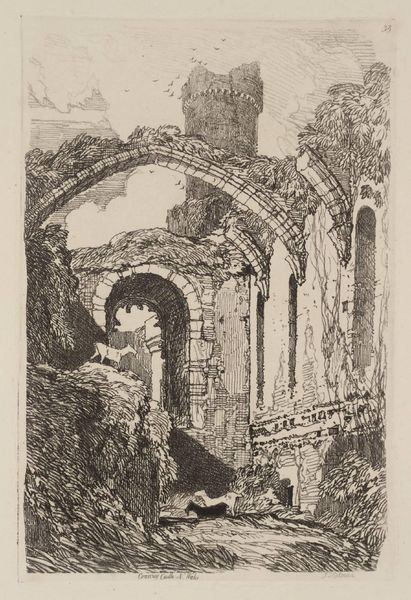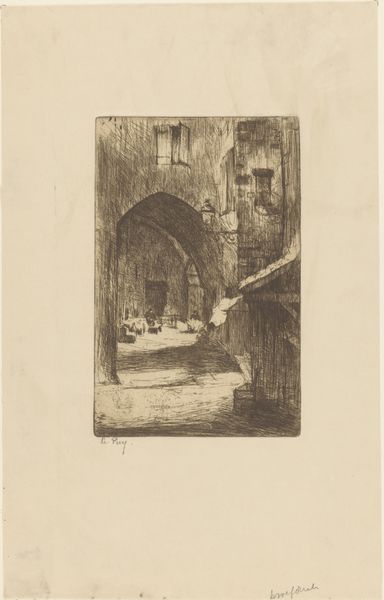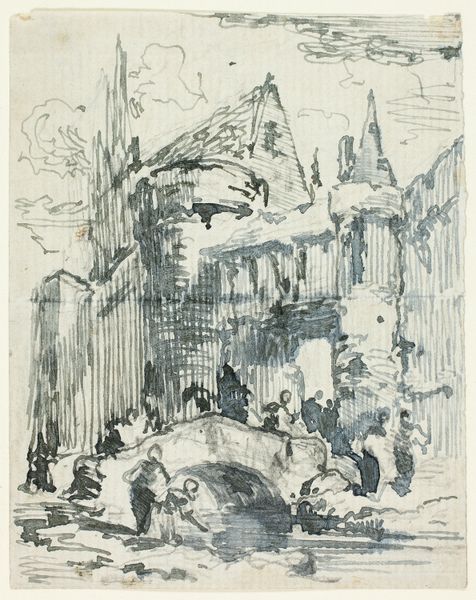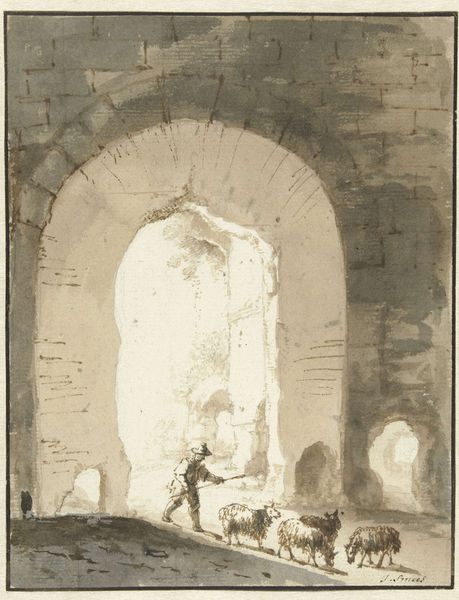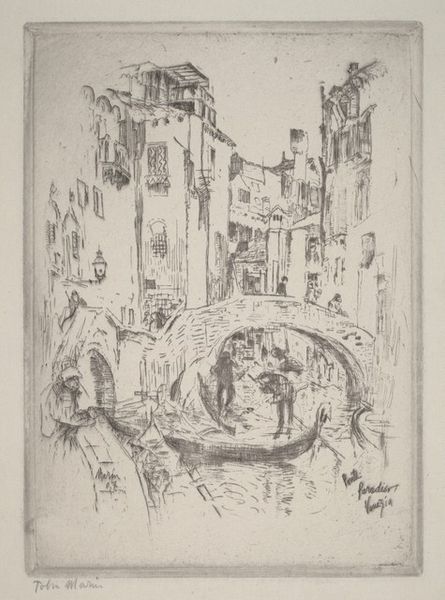
#
toned paper
#
light pencil work
#
ink painting
#
pencil sketch
#
etching
#
linocut print
#
ink drawing experimentation
#
pen-ink sketch
#
watercolour illustration
#
watercolor
Dimensions: height 168 mm, width 124 mm
Copyright: Rijks Museum: Open Domain
Curator: This intriguing ink drawing, dating from 1787-1811, is by Victor Jean Nicolle, and is titled "Two Women at a Sarcophagus Serving as a Fountain". Editor: It has this fascinating sense of depth achieved through rather light pencil work. It almost looks like a quick study, yet with very precise architectural rendering. There is a contrast between detailed background and foregrounded women. Curator: Precisely. Nicolle, as part of the generation after Piranesi, found Rome a captivating subject. This work depicts a romantic encounter, set against the backdrop of classical ruins transformed into public space. The women, possibly tourists, are enjoying the spectacle of a repurposed sarcophagus. Editor: That sarcophagus...It's quite a statement isn't it? Something sacred is being profaned and made utilitarian. The craftsmanship of something old is being reduced to modern use, losing its value through mass consumption of space. It really brings forward questions of accessibility, public vs. private and use value. Curator: Absolutely. And note how the classical architecture itself, including the statues in niches, is incorporated into the lived experience. Nicolle’s image highlights the cultural appropriation so common during the Grand Tour era, which reveals complex political and economic dimensions in the context of aristocratic cultural capital. Editor: It's the juxtaposition of death with mundane life; of grief repurposed into amusement that resonates. You also see an integration of drawing styles with an etches look. The rough quality reminds me of old prints meant for mass production and popular consumption. Curator: This piece provides rich material for discussion, doesn't it? How art and artifacts circulate and acquire value. Editor: Exactly. The whole piece questions traditional practices of craftsmanship to make the work reproducible to all who desire it, for practical needs. Curator: I agree. It makes one reflect on our relationship with the art world around us and how these pieces gain new significance and create shared cultural understanding. Editor: Absolutely. I’ll be pondering on its message about the material consequences of a society that is constantly evolving to make the world more accessible, thanks!
Comments
No comments
Be the first to comment and join the conversation on the ultimate creative platform.
